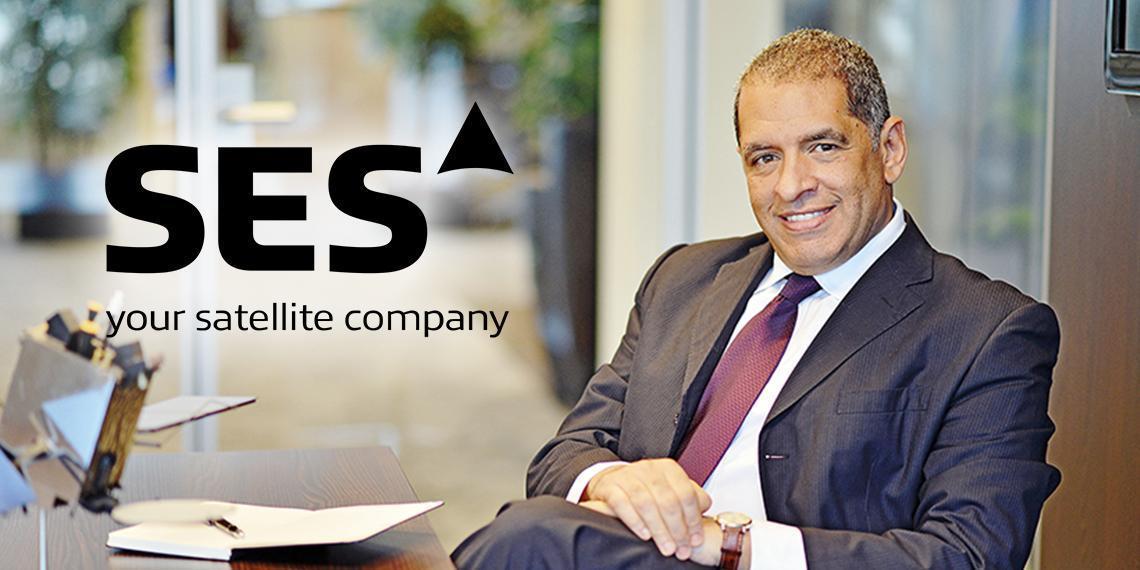As the number of devices connected to the internet approaches tens of billions, satellite capacity and new solutions are necessary to cater for the increasing variety of applications these devices make possible, says Hussein Oteifa, general manager, Middle East, Commercial at SES, the global communications satellite operator based in Luxembourg. Oteifa spoke to Telecom Review about SES's partnerships and progress as a successful satellite operator, as a result of the increasing demand for satellite technology to cater to the explosion of connected devices around the world.
Can you tell us more about the ongoing preparations in relation to the SES 10 satellite which will be launched on top of a Falcon 9 rocket this year?
SES has always been an innovative satellite operator and we are excited to be a partner with SpaceX and take the entire industry into new era. We will be the first satellite operator to launch on a Falcon 9 with a flight-proven booster. For SES, the impact of launching on this particular vehicle is very significant as it ushers in a new phase of accessibility to space and changes the economies of the satellite industry, allowing the satellite industry to be more agile and competitive in a digital era.
Financial results from 2016 show a successful year for SES. What details can you share about this?
SES had a successful year in 2016 of executing the strategy and accelerating SES's differentiated capabilities across the value chain with the consolidation of RR Media (now part of MX1) and O3b. This has allowed SES to improve its business mix and future growth profile by delivering customized solutions for our customers in each of the four market verticals: video, enterprise, mobility and government.
Can you tell us more about the connectivity deal merged between SES and GEE?
The heart of the agreement between SES and GEE - which provides in-flight entertainment, media content, technology and connectivity solutions to the airline industry - is to deliver the next generation services in the air, on land and at the sea. In the agreement GEE acquired Ku-band payload on SES's AMC-3 satellite to boost capacity for its customers in North America, the Gulf of Mexico and Caribbean.
What does SES identify as the key growth opportunities in the satellite market in the future?
The demand for connectivity, on-the-go and everywhere, is a tremendous growth driver for the satellite industry today. To fulfill this demand, SES offers customized services for specific applications and needs. We see huge growth in the mobility vertical in the coming years.
According to Euroconsult, FSS demand for mobility applications (maritime and aeronautical) will grow at 40% CAGR between 2016 and 2025. Majority of the demand will come from aero, where the number of connected planes via satellite will grow from 3,969 in 2016 to 14,510 by 2025. We also observe a similar trend for the maritime sector. Today, cruise ship passengers and crew members are carrying multiple devices on board that need connectivity on the seas.
In the enterprise sector, we foresee growth through many different drivers. As an example, there is a clear opportunity for satellite to provide competitive solutions for 3G and 4G/LTE. The internet of things will also be a huge growth driver. As the number of devices connected to the internet approaches tens of billions, satellite capacity and new solutions are necessary to cater for the increasing variety of applications these devices make possible. The banking and oil industries will remain one of the key business areas for us, but we also see growth opportunities in providing connectivity solutions for e-learning and e-health.
In the video vertical, emerging markets and media consumption habits are creating new opportunities. New audiences and new viewing habits such as multi-screen and multi-room video viewing mean demand for new channels and solutions. Globally, an estimated 54 million UHD screens were sold last year, compared to 31 million UHD screens sold in 2015. Satellite is becoming more and more crucial to provide the additional capacity required to deliver higher picture quality, which consumers increasingly demand, and is also well-suited to complement and offload the stress on terrestrial networks in delivering high quality content and entertainment to viewers.
Which countries in the Middle East are seeking the most demand for satellite services?
Different countries within the Middle East region have different needs. For instance, the demand for satellite connectivity in Saudi Arabia remains strong due to its requirements for banking networks and the provision of e-learning and surveillance services, whereas in the UAE, demand is driven by broadband services, maritime and aeronautical connectivity.
What are the main challenges facing the industry?
The connectivity needs of today are very different compared to a decade ago, and this is largely due to the advancement of portable devices, more advanced servers, more powerful computers and increasingly sophisticated applications. Today, our data customers have increasingly diverse needs. With the advent of high throughput satellites (HTS), new satellite systems and technologies - including digital processors, which open up possibilities to re-use frequencies - SES is able to bring differentiated solutions to each market vertical to meet unique customer needs.
Examples include O3b's MEO satellites, which are ideal for luxury cruise ships that require extremely high speed internet, and SES's GEO satellites with dedicated mobility beams, which are also well-suited for the maritime market, as well as our upcoming GEO hybrid satellites with HTS that are well-suited for aeronautical connectivity.










